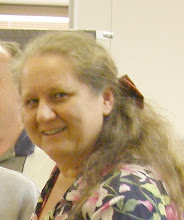MDA Compliance and QVT
While the MDA story is very much about transformations and targetting multiple platforms, I don't believe that the use of transformations that conform to OMG's transformation standard-in-the-making (Query/View/Transformation) is a requirement for MDA Compliance for any individual tool.
QVT is clearly very important for people who wish to write their own MDA transformations. It is very important to the OMG (or anyone else) who needs a way to standardise a transformation. However, I don't believe that every MDA tool must be constructed using QVT or to expose the transformation being undertaken. Many MDA users will want to get their transformations off-the-shelf and be quite happy for them to be black boxes, so long as it is known what to expect in terms of I/O. Similarly vendors whose intellectual property is embedded in their transformation are unlikely to want to expose it to their customers or to their competitors, so they too will be interested in black box MDA tools. And if the tool is a black box, then whether it is internally implemented using QVT or anything else becomes somewhat irrelevant.
Obviously if a tool is built on the QVT standard, it makes sense to have some conformance statement about how faithfully it implements the QVT standard, but this can be in addition to any claims about MDA conformance.

